'Suddenly we had a new comprehension of affairs, which reminded that the luxury of politics floated atop a foundation by economics.'
'Along with this, finance ministers became crucial in molding the perception and reputation of Union Cabinets.'
'Governments couldn't afford a wrong person in that portfolio,' asserts Shyam G Menon.

On December 26, when news of Dr Manmohan Singh's passing appeared, I found myself wondering what exactly the demise of this person I had never met, meant to me.
There was a starting point available. My first full-time job was in 1991, which was coincidentally the year Dr Singh became India's finance minister.
Someone who strayed into journalism, I worked next door to the Reserve Bank of India's New Delhi office, the youngster in me lost to life in Delhi and little interested in the salvaging of India's economy happening next door and some distance away, closer to Parliament, where the offices of the major ministries -- including the finance ministry -- stood.
The wake-up call from this sleepy approach to existence happened in December 1992 and the following months, a period that shook India. But it was a few years later, older and writing about major businesses in Mumbai, that one got a general sense of what the economic liberalisation associated with Dr Singh, actually felt like.
There was by then, a general understanding that bloated and bureaucratic government was set to recede in matters concerning the economy.
A new type of bureaucrat, wishing to understand the needs of others and solve problems, appeared in some departments.
States began road shows to attract investments. Companies, on their part, knew that old school protectionism was on its way out. None of this would be sudden, but in phases with trajectory foretold.
While the older generation and many in the trade unions saw these developments with concern, for many in my generation, liberalisation denoted new possibilities.
Choice in terms of employment, choice in terms of things to buy -- all this grew steadily. We also knew that in swathes of the economy, particularly the private sector, competition had become a reality of life.
One performed and rose up in the ranks. One was wanted for what one delivered. Looking back, these would definitely qualify to be the early years of liberalisation; a rosy period when any Indian company hitting a turnover of a billion dollars made news simply because a billion dollars was a major milestone in our fledgling GDP story.
The economy had been at its weakest when I sleep-walked through life in Delhi and by the early years of my life in Mumbai, it was a case of promising rejuvenation.
There was also another thing. Thanks to a confluence of various factors including trends within the media, the economy had become the talk of the town.
There was a general interest in economics. The annual Budget was hugely discussed.
It became a major media event and how the stock market responded to economic policy settled in as a significant piece of the optics deciding acceptance of governments.
Dedicated business publications and television channels sprouted. Companies and the entrepreneurs and officials at their helm, came to have a say in the narrative of the day.
This was a major departure from the past. Until this time, economy and business stood several spots behind politics.
Suddenly we had a new comprehension of affairs, which reminded that the luxury of politics floated atop a foundation by economics.
Along with this, finance ministers became crucial in molding the perception and reputation of Union Cabinets. Governments couldn't afford a wrong person in that portfolio.

The early years of everything are a dream phase. Then maturity comes calling. That is when the honeymoon sours.
As early as 1992, there had been a challenge to Dr Singh's term as finance minister in the form of the 1992 stock market scam.
His offer to resign was turned down by the then prime minister, Narasimha Rao. Economic liberalisation continued.
The trend was kept alive by finance ministers under the Atal Behari Vajpayee-government as well as later governments headed by Dr Singh.
However, by the closing phase of the second Manmohan Singh-government and the years of Narendra Modi as prime minister thereafter, it was increasingly clear that the first flush of India's economic liberalisation had begun stagnating into a knot reminiscent of the country's old feudal hierarchies and systems.
That general sense of possibility and street level optimism, which was there from the mid-1990s onward, appeared traded for leadership by an elite enjoying immensely polarized wealth or equally polarized political clout. Money is cold, conservative. It has always been so.
If in the mid-1990s, big business finding voice was a pleasant departure from the dullness of Indian politics, by the 2020s, too much of a business-centric perspective was beginning to spoil political and social discourse.
In its eagerness to self-propagate by the easiest means, money was increasingly teaming up with conservative social trends and conservative politics, often backsliding the journey by Constitution and free and inclusive society, independent India embarked on.
The story of economic liberalisation wasn't halted but for sure there were road blocks to the socially liberal trends that accompanied economic liberalisation earlier.
Instead of that society, we seemed to witness a more conservative incarnation of the past. Some of my friends feel, a conservative feudal society is the Indian reality.
Any change we experienced in the early stage of liberalisation was skin deep and fleeting. Coming as it does from a politics founded in celebrating ancient India, the Bharatiya Janata Party and its successive governments don't seem bothered.
Meanwhile, political parties consumed by the need for electoral victories have made economics a handmaiden to such compulsions as well. Corrections won't be easy; corrections to things matured have never been easy.

Perhaps the biggest change felt today is that courtesy growing income inequality, there is the concern that the economy left to its own accord may end up doing more harm than good.
While some quarters are fat with the capacity to peddle power and influence, others find it tough to be heard and counted.
If everyone is not taken along in a story of exploding GDP, if inequalities multiply, then risks will abound.
After a long gap, there is currently the emergent need (and to an extent, willingness in the public) to see an enlightened, modern, socially and economically inclusive politics take charge.
The country awaits such a politics. A little over three decades since he cut India onto the path of economic liberalisation and a decade since his last tenure as prime minister, this is where the project commenced by Dr Singh as finance minister and Narasimha Rao as prime minister in the early 1990s, stands.
It would be tempting to see it as things gone wrong. That is an incorrect approach for one can neither deny nor tarnish the positive and energetic trends India witnessed when the economy changed its colors in the 1990s.
I suspect that in many ways, particularly when viewed overall, Dr Singh may have reached the economy where he originally wanted to, the myriad problems and disparities notwithstanding.
Although it means little without improved per capita income and improved distribution of wealth, India's GDP, which was around 275 billion dollars in 1991 (source: statista.com), now ranks fifth biggest globally at roughly 3.9 trillion dollars.
As the next gear in reforms, along with corrective measures, waits to kick in, we need a good enough driver; someone as knowledgeable about economics as Dr Singh was and also shares his compassionate nature with both feet firmly on the ground.
Perhaps more of the latter, for if there is one thing we felt confident giving Dr Singh, it was our trust.
Other Congress appointees to the post of finance minister, like P Chidambaram, found acceptance because the public knew there was Dr Singh in the background.

Death in the times of social media is a phenomenon by itself. As someone whose working life was shaped by the economic ambiance authored by Dr Singh, the most notable aspect for me, in the wake of his demise, was how even his most bitter critics -- people who made their political careers by lampooning and ridiculing him -- scrambled to be on the politically correct side of the remorse pouring in.
Dr Singh died on December 26, 2024. By December 27 evening, there was buzz in the media of the government sanctioning space for a memorial; it was formally reported quoting an official press release, on December 28.
One would wonder if a memorial is what Dr Singh would have wanted. He didn't seem to be a person who carried his designations and the high offices he occupied, wherever he went.
His achievements were many. But he wasn't formidably decked up in medals for identity. The respect he got from Indians wasn't forced or extracted. They offered it freely. It speaks much of his nature.
Maybe an imaginative artist or architect would know how to physically showcase a human nature that didn't intimidate despite high scholarship and high positions held.
Whatever, Dr Singh I suppose, must be amused at the goings on, planned memorial to him included. As for me, I am amused by what happened to his erstwhile trenchant critics, the lot who revel in emasculating others.
It was just a decade ago that they strode on to the national stage soaked in triumph and making fun of the scholar turned bureaucrat turned politician occupying the office of prime minister, for his silence and inaction.
Some of us now look back at that specter of a frozen prime minister and empathise with it as potentially a case of human decency caught in aggressive political headlights. In politics however, that suffices to be ripped apart.
In 2014, Dr Singh's government was trampled underfoot by the new order risen. For the next ten years after that defeat in 2014, Dr Singh and others in the political opposition would witness the BJP repeat its success in another two general elections.
On the bright side, the Opposition -- particularly the Congress, at first utterly marginalised and overlooked, has returned to some strength in Parliament while state elections have remained a case of fluctuating fortunes.
If there is one thing that can be said about India's political Right, it is that they watch, see and act opportunistically. The days surrounding Dr Singh's demise eerily missed the regular drone of Right-Wing propaganda.
Very likely that switch had been turned off because the establishment knew that propaganda would be exactly what it is -- mere propaganda -- in days of genuineness remembered.
Instead, one of the quickest announcements of a memorial to the deceased, followed. Hailing as the establishment does from a tradition that makes everything great and good its own, the politics around owning Dr Singh's legacy may be far from over.
Whatever, one hopes they make something easily accessed by the people and not at all imposing -- no gigantic, dominating statue or structure.
For that, is the impression of Dr Singh I have as a common citizen. In 2024, being remembered and loved as a fellow human being, is an absolute rarity in the world of politics.
Shyam G Menon is a freelance journalist based in Mumbai.
Feature Presentation: Rajesh Alva/Rediff.com
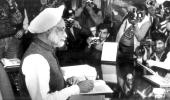
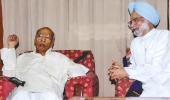

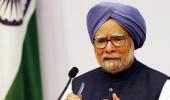
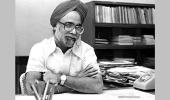



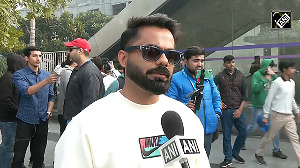

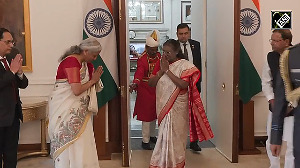
 © 2025
© 2025